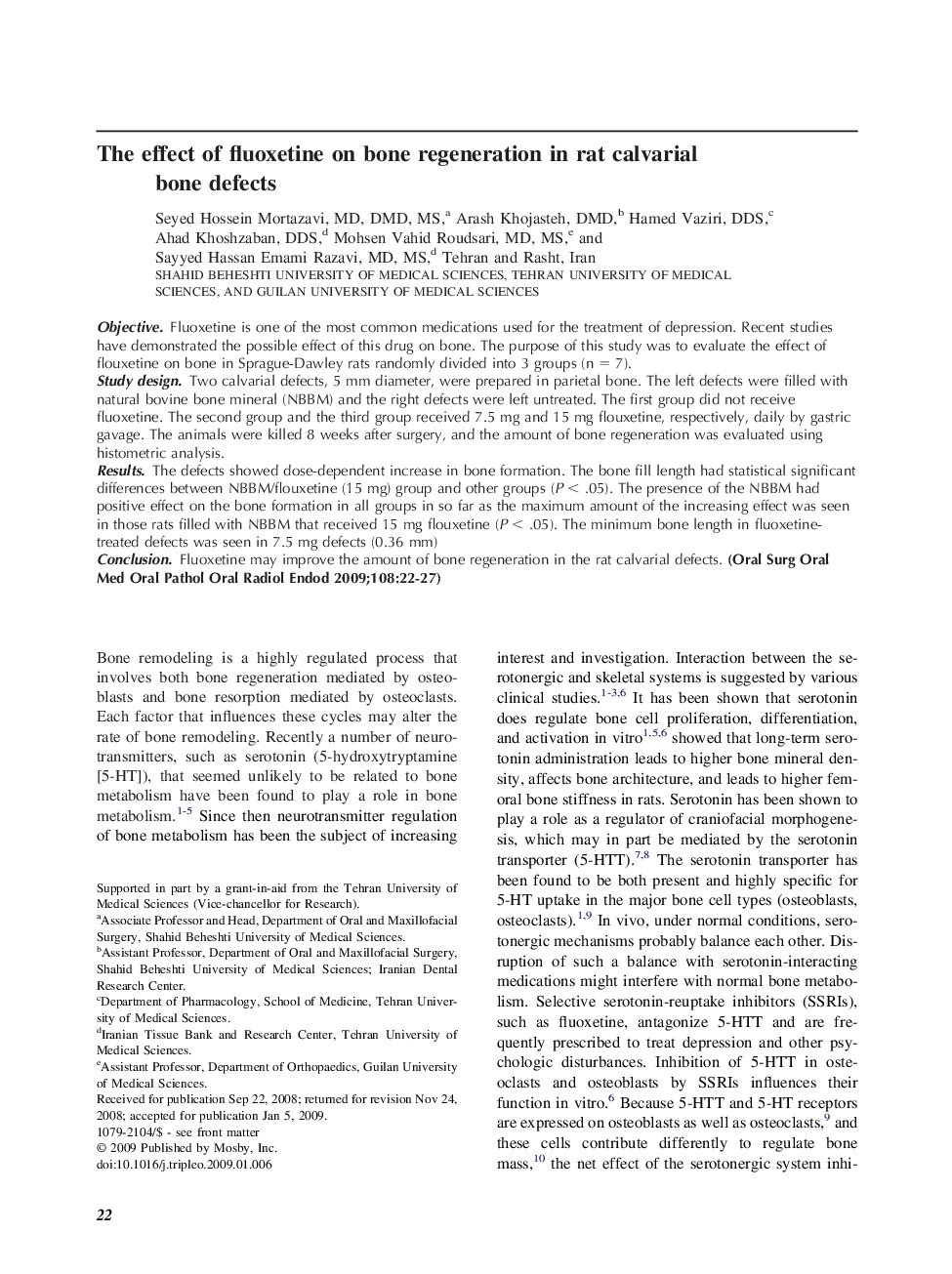| Article ID | Journal | Published Year | Pages | File Type |
|---|---|---|---|---|
| 3168179 | Oral Surgery, Oral Medicine, Oral Pathology, Oral Radiology, and Endodontology | 2009 | 6 Pages |
ObjectiveFluoxetine is one of the most common medications used for the treatment of depression. Recent studies have demonstrated the possible effect of this drug on bone. The purpose of this study was to evaluate the effect of flouxetine on bone in Sprague-Dawley rats randomly divided into 3 groups (n = 7).Study designTwo calvarial defects, 5 mm diameter, were prepared in parietal bone. The left defects were filled with natural bovine bone mineral (NBBM) and the right defects were left untreated. The first group did not receive fluoxetine. The second group and the third group received 7.5 mg and 15 mg flouxetine, respectively, daily by gastric gavage. The animals were killed 8 weeks after surgery, and the amount of bone regeneration was evaluated using histometric analysis.ResultsThe defects showed dose-dependent increase in bone formation. The bone fill length had statistical significant differences between NBBM/flouxetine (15 mg) group and other groups (P < .05). The presence of the NBBM had positive effect on the bone formation in all groups in so far as the maximum amount of the increasing effect was seen in those rats filled with NBBM that received 15 mg flouxetine (P < .05). The minimum bone length in fluoxetine-treated defects was seen in 7.5 mg defects (0.36 mm)ConclusionFluoxetine may improve the amount of bone regeneration in the rat calvarial defects.
